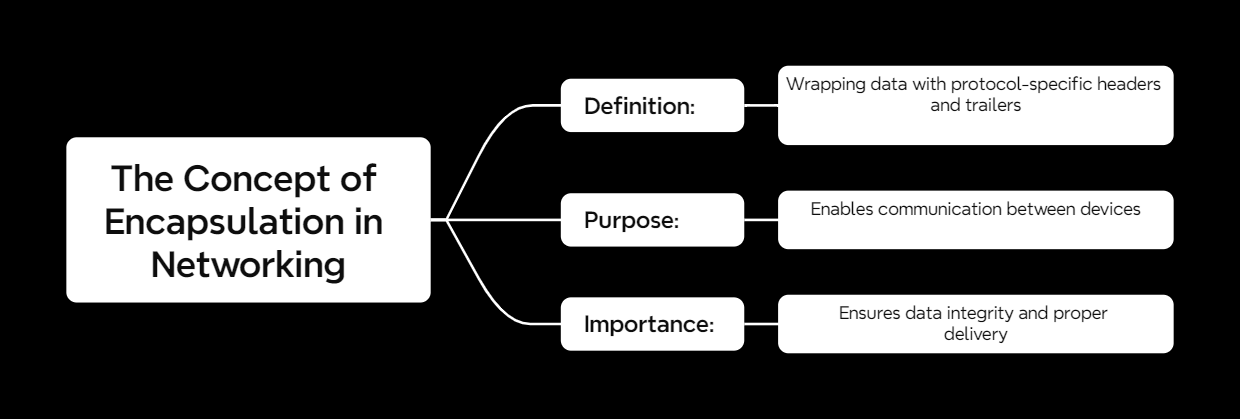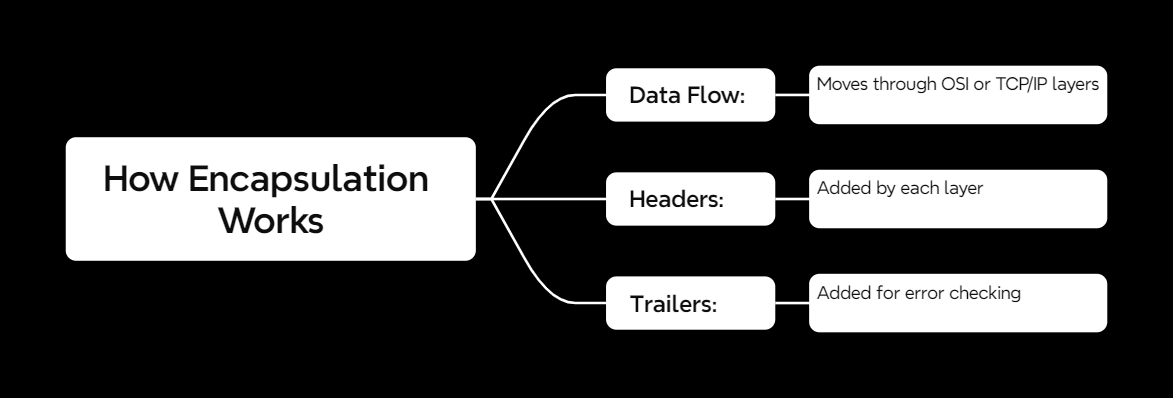Let’s get into encapsulation, one of the most crucial processes in networking. It’s how data gets wrapped up and sent from one device to another, layer by layer. Think of it as packing a parcel with multiple layers of protection—each layer serving a specific purpose.
What Is Encapsulation?
Encapsulation is the process of adding headers and trailers to data as it passes through the layers of a networking model (OSI or TCP/IP). Each layer has its own job, and the headers/trailers contain information needed to perform those jobs.
Why is it important? Without encapsulation, devices wouldn’t know how to interpret or route the data. It’s the backbone of seamless communication!
How Encapsulation Works
Encapsulation happens as data flows from the top layer (Application) to the bottom layer (Physical). Here’s a simplified flow:
- Application Layer: Data is created (e.g., an email or web request).
- Transport Layer: Adds a header with port numbers for the sender and receiver (e.g., TCP/UDP).
- Network Layer: Adds an IP header with source and destination IP addresses for routing.
- Data Link Layer: Frames the data with MAC addresses and error-checking info.
- Physical Layer: Converts the data into bits for transmission over cables or wireless.
Encapsulation in Action
Let’s break down an example of encapsulation step by step:
1. Application Layer
Imagine you’re sending an HTTP request to open a webpage. The Application Layer generates the raw data (the request).
2. Transport Layer
The Transport Layer (TCP) adds a header with port numbers (e.g., Port 80 for HTTP). This ensures the data reaches the correct application on the destination device.
3. Network Layer
Next, the Network Layer adds an IP header, including the sender’s and receiver’s IP addresses. This header helps the data navigate through routers to the correct network.
4. Data Link Layer
The Data Link Layer wraps the data into frames, adding MAC addresses to identify devices on the same local network. It also includes a trailer for error detection.
5. Physical Layer
Finally, the Physical Layer converts the frames into bits (0s and 1s) and sends them over the network medium (e.g., Ethernet cable or Wi-Fi).
Why Encapsulation Matters
Encapsulation might seem technical, but it’s essential for modern networking. Here’s why:
1. Standardization
Encapsulation ensures a universal method of communication. Devices from different manufacturers can communicate without compatibility issues.
2. Error Checking
Trailers at the Data Link Layer help detect and fix errors during transmission, ensuring data integrity.
3. Interoperability
Encapsulation makes it possible for networks and devices to work together, regardless of their underlying technologies.



